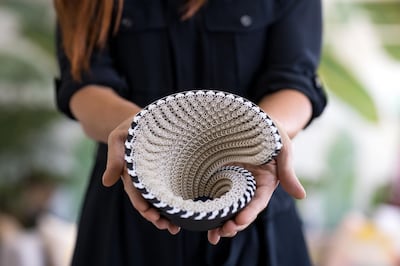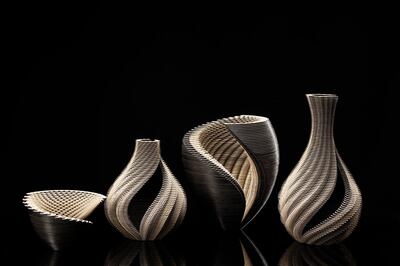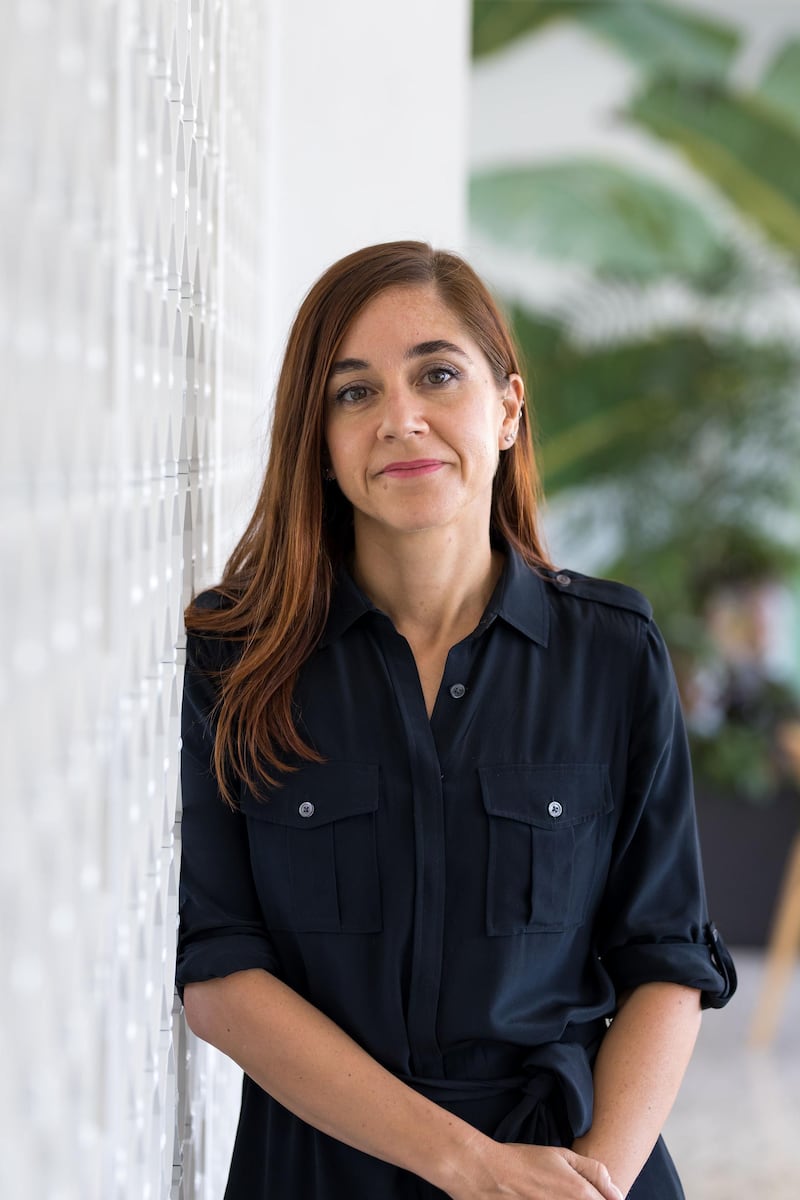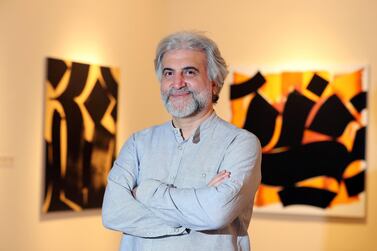Vessels are inherently simple in design. The curved hollow containers are usually made of a single material and designed for carrying liquid. Yet UAE artist Julia Ibbini's vessels are far from simple. They seem to be a deliberate contrast to the form on which they are based. Her pieces comprise thousands of complex stacked patterns and – as they are made of paper and cardboard – they aren't designed to hold anything. Still, they are a mesmerising collaboration between mathematics and the human hand, and impressive enough to earn her this year's Van Cleef & Arpels Middle East Emergent Designer Prize.
Ibbini's process starts with a hand-drawn element, a pattern alluding to plantlike forms. She then puts the pattern through a software, arranging it in multiples around a radial arc. Algorithms and computational geometry are used to calculate the thousands of parts needed to make the pieces. Ibbini then uses a customised laser machine to cut the designs in paper and cardboard. Each vessel takes at least a week to cut. Finally, she puts everything back together by hand, stacking and sticking the cut-out pieces using archival glue and pins. It's a process that can take between 12 to 72 hours, depending on the vessel's complexity and size.

"I think that's what is most interesting about the practice," Ibbini told The National, "this idea of human and machine collaboration to make something that's extremely precise, but that ultimately has been made by hand so it can have this feel of being organic and alive."
Ibbini's vessels, which are currently being exhibited at the Dubai Opera Boutique, seem to be a natural progression from her previous work: flat pieces of cut-out paper stacked by the dozen, with colours and crystals fitted by hand. They show arced windows and spirals with Arabesque patterns inspired by ancient Islamic designs. But Ibbini said she wouldn't have made the jump to sculptures – at least not so quickly – if it weren't for the prestigious prize's submission call.

Each year, designers who live in the GCC are invited to submit their proposals for the Van Cleef & Arpels Middle East Emergent Designer Prize, established in 2013 and presented in partnership with Tashkeel. The selected finalists are then commissioned to create their products with the winner receiving a week-long trip to Paris to study with master craftsmen.
This year's theme was the 'Cyclical', and Ibbini barely made the submission deadline. "It was an interesting jump, going from two dimensional work to three. I don't know how quickly I would've made that jump if I wasn't prompted by the prize's submission guidelines. I made a lot of mistakes along the way."
Ibbini, a Jordanian-British artist who grew up in Abu Dhabi, briefly lived in the UK but came back after earning her degree in visual communications.
Before becoming a full-time artist, Ibbini worked in marketing for 10 years. "Even then, I'd come back home and work on my art," she said. Ibbini was first introduced to laser cutters at the TechShop, a creative space in Abu Dhabi that provides access to professional equipment and software. Its facilities include woodworking equipment, laser cutters, welding stations and a textile department.
"The first time I used laser cutters was three years ago. Pretty soon, I was spending most of my time there, learning how to use and customise laser cutters," Ibbini said. "Eventually, I came up with the method I use to make my artwork."
Ibbini is keen to explore different uses for her creations. "I plan on expanding the vessels into new areas," she said. "I'd like to make some large-scale works and create more functional objects, such as lighting installations and furniture."







